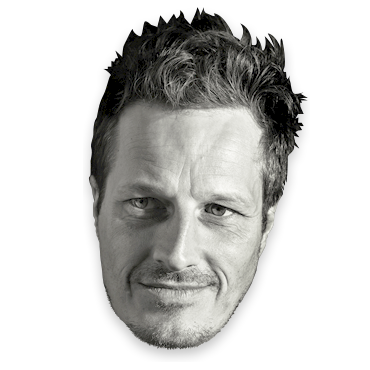Geospheric 2: atmosphere
I want to explore how the earth has characteristic weather patterns, prevailing winds which go in different directions at different latitudes. (I'm not rendering any land masses for this project, so the (considerable) effect of the continents on wind patterns isn't something I'll do).
I can create a simplified model of the Earth's atmospheric circulation by creating fields which impart vectors at different latitudes. The fields need to impart more energy at their centre and tail off at the edges: which Wikipedia and Grapher.app, tell me is a normal or Gaussian distribution.
Five of these fields, placed at the centre of the five main prevailing currents turn 6,000 randomly placed particles into a reasonable approximation of large-scale wind patterns. There are a bunch of complexities to deal with (for example, when a particle is travelling northwards and reaches the pole, I have to flip its longitude by 180° and invert the latitude vector) and I'm not showing particles on the "dark side" of the earth away from the camera. I still need to work on the display of the faster particles, but even so the effect is quite appealing.
Calculating and rendering 6000 particles is less CPU-intensive than putting 2000 random triangles on the screen for the other spheres. I can get 30fps just fine: rendering to screen is much more expensive than maths, even "hard" maths like trigonometry and square roots.
Work in progress: Geospheric
Iceland is explicitly geological. Earthquakes and volcanoes, mountains, glaciers, geysers, the aurora: our precarious existence on an only moderately stable rocky sphere is everywhere apparent.
I'm exploring the concentric spheres of geological activity: the inner and outer core, the lower and upper mantle, the crust riding on top: and above that the atmosphere and the ionosphere, where the magnetic field generated in the core interacts with the solar wind to produce the aurora.
Main challenge here is rendering time. I'm trying to build this as a live-rendered animation: at 25 frames per second I only have 40 milliseconds to output c. 10,000 elements. Send more computing power!
New series: Weft
In general I'm interested in emergent patterns created by multiples: simple shapes or movements, iterated hundreds or thousands of times. Waves, snowdrifts, flocks of starlings, schools of fish: each element follows simple rules, but the overall effect can be complex, surprising, beautiful.
For this series I want to explore that way that translucent fabric drapes, folds over itself. Each "thread" is a simple bezier curve with four control points. Each point has a semirandom vector which evolves over a thousand threads, and I render two pieces with random colours.
As with Orrery, my approach is to render hundreds of images and edit a selection. As I refine the process I should get more "successful" renders, although even now my yield is better than 10%. These images are challenging to print: moiré patterns and oversaturation are a problem. Printing straight from PDF tends to create too much opacity: PDF->PNG at 300(printed)ppi seems to give the best results so far.
Orrery 6: Prints!
Getting digital work out of the computer and into the real world isn't trivial. I've lugged a 2.5kg projector halfway across the world, and I've also send six of the Diurnal images to Fracture to be printed on glass. Both ways are pretty expensive.
For Orrery, I'm starting small: I purchased a Canon Selphy photo printer, delivered in two days from Reykjavik. It's a cute little printer optimised for printing 100 x 148mm snapshot-sized colour photographs. It does what it does well, at the cost of flexibility and consumables: once you've purchased the printer itself (~26,000 Icelandic kronur, c. 200 Euros), a 108-print paper + ink set costs ISK6900/ ~50 Euros, or < 50 Eurocents per print. That's not bad for nice-quality small prints, done in about a minute each in the comfort of your room.












